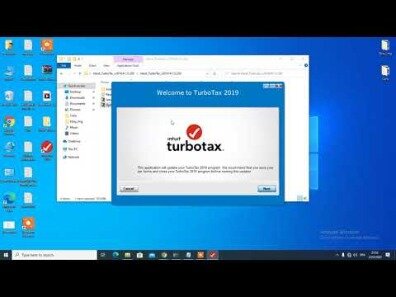The Disadvantages of Playing at an Online Casino Online casinos, also known as Internet casinos,…
Product Cost Definition, Example and Types of Product Cost
Contents:


Production costs refer to the costs a company incurs from manufacturing a product or providing a service that generates revenue for the company. You must always make sure your prices are covering your own costs. ‘Buy One Get One Free’ is the godfather of deals, but it’s a little tired now. Get inventive with your deals – offer half price items, savings for your customer next time they buy, or even the chance to unlock exclusive products or sales. However, if you’re selling directly to customers yourself, like most small businesses and small-scale sellers, then you need to work out your retail price. Cost-plus pricing has a lot of benefits – it’s simple, makes it easy to clearly justify the end total, and is pretty consistent.
Markup is the difference between the cost of the product and the selling price of the product. The simplest way to determine the price of a product is cost-plus pricing, also called markup pricing. This means working out how much it costs in total to make your product, then adding your markup percentage. Product cost can be recorded as an inventory asset if the product has not yet been sold.
- For an expense to qualify as a production cost it must be directly connected to generating revenue for the company.
- Direct material costs are those you can trace directly into the finished goods.
- Out of the above-given costs, Direct labor and direct material come under direct costs, while factory overload comes under indirect costs in a company’s income statement.
- Product costs related to services should include things like compensation, payroll taxes and employee benefits.
- The costs that are not classified as product costs are known as period costs.
- Businesses must keep detailed records of all salaries paid, direct material prices paid, and all relevant overhead costs for each month.
Examining overall processes enables you to control the entire workflow rather than just a portion. This can give you a notion of where you might price your product created by using product management tools. The company costs $50 per hour for a machine operator and $15 per hour for other labor. Costs incurred to produce a product intended to sell to a customer is called Product Costs. The company costs $50 per hour for a machine operator and $15 per hour for other laborers. The production department requires 500 grams (or 0.5 kg) of fabric to manufacture a single shirt.
Examples of other overhead costs are property taxes, rent and utilities. Add together each manufacturing overhead cost you incurred during the month to determine total manufacturing overhead costs. While many types of production processes could be demonstrated, let’s consider an example in which a contractor is building a home for a client. As the name suggests, product costs are derived from producing major types of products by the business. Product cost is only incurred when some product is acquired or produced.
The Ascent is a Motley Fool service that rates and reviews essential products for your everyday money matters. What this means is that company XYZ will have to sell each bed for more than $24.8 to be able to generate a substantial profit. All of these machines need maintenance to ensure they’re running properly and that there aren’t delays.
Production costs can include a variety of expenses, such as labor, raw materials, consumable manufacturing supplies, and general overhead. Overhead or sales, general, and administrative (SG&A) costs are considered period costs. SG&A includes costs of the corporate office, selling, marketing, and the overall administration of company business. The costs that are not classified as product costs are known as period costs. These costs are not part of the manufacturing process and are, therefore, treated as expense for the period in which they arise. Period costs are not attached to products and the company does not need to wait for the sale of its products to recognize them as expense on income statement.
Product Costs on the Balance Sheet
This can be particularly important for small business owners, who have less room for error. The average cost is determined by the total cost of one unit in your production line. You can calculate the average cost by figuring out the total cost of production and then dividing that sum by the number of units you produced. If it costs $100 to produce 100 widgets, then the average cost is $1.
Because it comprises the production overhead required by GAAP and IFRS, product cost appears in the financial statements. Compensation, payroll taxes, and employee benefits should all be included in service product costs. By estimating the per-unit cost, the entity can set an appropriate sales price and avoid situations where its products are under-priced or over-priced. Product underpricing and overpricing both results in losses for the entity.
Rising milk and energy costs push price of cheddar up 49% – The Times
Rising milk and energy costs push price of cheddar up 49%.
Posted: Fri, 21 Apr 2023 23:01:00 GMT [source]
When t accounts are sold, the product costs become part of costs of goods sold as shown in the income statement. Whereas product cost is the sum of all the expenses surrounding the production of your goods, product cost per unit is the cost of producing a single product. As the rate of production increases, the company’s revenue increases while its fixed costs remain steady.
The markup percentage is basically how much profit you want to make on the product – between 20% and 50% is the industry standard. Full BioSuzanne is a content marketer, writer, and fact-checker. She holds a Bachelor of Science in Finance degree from Bridgewater State University and helps develop content strategies for financial brands. Full BioAmy is an ACA and the CEO and founder of OnPoint Learning, a financial training company delivering training to financial professionals.
PRODUCT COST VS PRODUCT COST PER UNIT
Businesses of all shapes and sizes aim to produce high-quality products that meet customer needs while ensuring profitability. It helps determine the cost of goods sold, which eventually determines the price of a product. While there are various types of product costing, we will delve into the four main categories that businesses typically use to categorize their expenses. Debits and credits costs remain the same, regardless of how many products or services a business produces. Direct materials are the raw materials that are integrated into the product. In this example, Sterling will choose an option based on his preferences.
Since these expenditures create value and benefit in future periods, they are reported on the balance sheet instead of being expensed on the income statement. Production costs, which are also known as product costs, are incurred by a business when it manufactures a product or provides a service. For example, manufacturers have production costs related to the raw materials and labor needed to create the product. Service industries incur production costs related to the labor required to implement the service and any costs of materials involved in delivering the service.
GENUINE PARTS CO Management’s Discussion and Analysis of Financial Condition and Results of Operations (form 10-Q) – Marketscreener.com
GENUINE PARTS CO Management’s Discussion and Analysis of Financial Condition and Results of Operations (form 10-Q).
Posted: Thu, 20 Apr 2023 16:05:05 GMT [source]
Knowing the cost of production will also help you decide whether to sell a product after one stage of processing or after two other stages. Calculating your product costs is a necessity if you are a manufacturer. If one crate has 24 bottles and you have 10 crates, then the total is 240 bottles. You will then arrive at the product cost per unit by dividing 500 by 240 to get 2.08.
Pricing Decisions
This can result in a batch of drinks whose production cost is too high to realize a profit. For you to determine or guarantee the profitability of a project, you will have to keep a keen eye on the expenses involved in the project. If you produce skimmed milk, cheese and whey protein, you can say that you have three projects running in your factory. This wide array of options can be narrowed down to the most profitable by determining the production cost of each of these items. From the raw material of milk, a creamery can produce pasteurized milk, skimmed milk, non-fat milk, cheese, butter and even a protein supplement like casein.
(It’s every February 3rd, by the way, just so you know.) You can check out all of our Black Friday & Cyber Monday Ecommerce Guide. This can be an especially useful tactic if you’re selling in online bids on platforms like eBay. “The Rule of 100” suggests that if you’re running a sale on items costing under $100, you should show it as a percentage discount. Whereas, if you’re running a sale on items costing over $100, you should show the savings in dollars.
Product costs, also known as direct costs or inventoriable costs, are directly related to production output and are used to calculate the cost of goods sold. The total cost of a production run divided by the number of units produced is known as unit product cost. It is beneficial to delve deeper into the concept to understand how costs accumulate. A company typically produces similar products in batches of hundreds or thousands of units per batch. Indirect labor is the labor of those who are not directly involved in the product’s production. Security guards, supervisors, and quality assurance workers in a factory are examples.
Wholesale price vs. retail price
To eliminate overhead costs, a manager may modify product cost when making short-term product and unit pricing decisions. These costs include direct labor,direct materials, consumable production supplies, and factory overhead. Product cost can also be considered the cost of the labor required to deliver a service to a customer. In the latter case, product cost should include all costs related to a service, such as compensation, payroll taxes, and employee benefits. To figure out what the cost of production is, you need to add all direct and indirect costs of a manufacturing unit and divide that number by the total units produced. From there, you can make decisions about production, pricing and more.
Managers use product costing as a jumping-off point for pricing the manufactured products and taking steps toward cost reduction. The production costs incurred with the manufacture of one table total $125. Also, if your prices aren’t aligned with your business goals, it might be hard to get the desired results.
The cost of the labor required to deliver a service to a customer is also considered a product cost. Product costs related to services should include things like compensation, payroll taxes and employee benefits. In our example, quarterly, Raymond’s management determines all product cost components, including direct material, direct labor, and factory overhead costs. With the help of this data, an overall cost is determined on both a quarterly and annual basis. However, it excludes all the indirect expenses incurred by the company. Product costing examples include the cost of raw materials, labor wages, packaging materials, shipping costs, and overhead expenses like rent, electricity, and depreciation.

Service industries carry production costs related to the labor required to implement and deliver their service. Royalties owed by natural resource-extraction companies also are treated as production costs, as are taxes levied by the government. Because these costs include overhead, both GAAP and IFRS require companies and individuals to disclose them in their financial statements. In some cases, however, managers may disregard overhead costs when making short-term production and sale-price decisions.
Period Costs
She has nearly two decades of experience in the financial industry and as a financial instructor for industry professionals and individuals. Chris B. Murphy is an editor and financial writer with more than 15 years of experience covering banking and the financial markets.
Acme United Reports 6% Sales Increase and 27% EPS Increase for … – GlobeNewswire
Acme United Reports 6% Sales Increase and 27% EPS Increase for ….
Posted: Fri, 21 Apr 2023 13:00:00 GMT [source]
Product costs include direct material , direct labor , and manufacturing overhead . Product costs are those costs that are incurred to acquire, manufacture or construct a product. In manufacturing companies, theses costs usually consist of direct materials, direct labor, and manufacturing overhead cost. To find product cost, you need to calculate all the expenses involved in producing a product, including direct costs such as materials, labor, and overhead costs. The total product costs you have incurred for any given period should be reported on the income statement only when sold. This will give you an accurate view of your cost structure, and it’s also essential information when calculating taxes owed or other financial statements.
- Because the production cost equals the value of the goods themselves, if a product has not yet been sold, the product cost will appear on a balance sheet as an inventory asset.
- Whereas the security guard does not do any manufacturing, securing the area of production is part of the cost you should consider for your end products.
- Examining sellers in your niche is a straightforward approach to ensure your pricing is fair to you .
Marginal cost is the change in total cost that comes from making or producing one additional item. This is just good practice, but if you’re running a sale, you should always show the original price next to the new sale price. If you’ve discounted the product more than once, show each old price crossed out, with the current price clearly displayed.

